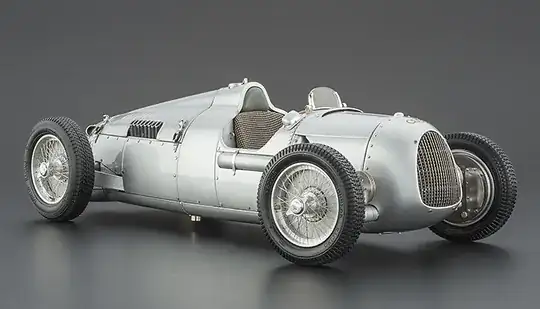The term "W-16" seems to imply some sort of configuration that resembles the letter W, which implies three banks of cylinders with one sharing a common cylinder head. In fact, the Bugatti W-16 in the Veyron is probably more accurately a double-V-16, with the two V's having different angles. So...was there any reason someone (possibly the Volkswagen group) decided to call this configuration a W-16?
Edit: The connecting rod configuration of the Veyron W-16 from the front looks something like this:
Not much like the letter W.
- 32,976
- 22
- 150
- 267
- 1,512
- 5
- 17
- 29
2 Answers
I think I know
If you want citations, I have already failed you.
You Asked
Was there any reason someone (possibly the Volkswagen group) decided to call this configuration a W-16?
Answer
Maybe.
Looking at this picture you can see the various designs and names of ICE platforms created by VW.
If you take a V and push into another V it looks like this.
VV Which looks like a W, hence the name.
Trivia
The oldest W-16 configuration that I can find is the Auto Union Type-C from 1936. Auto Union was one of the founding components of Audi AG. Here it is.
- 32,976
- 22
- 150
- 267
I'm by no means an expert, but found an interesting article on Wikipedia about the W engine that indicates the W being a relatively recent addition to the automotive world, but not the aircraft/motorcycle worlds: https://en.wikipedia.org/wiki/W_engine
Three different configurations have been called W engines:
Three banks of cylinders sharing a common crankshaft, a configuration also known as broad arrow configuration due to its shape resembling the British government broad arrow property mark.
Four banks of cylinders sharing a common crankshaft, also called a 'double-V'.
Two banks of cylinders with two crankshafts.
[...]
The classical W engine uses three banks of cylinders, all connected to one crankshaft.
[...]
One of the first W engines was the Anzani 3-cylinder, built in 1906, to be used in Anzani motorcycles.
[...]
The 1917 Napier Lion aircraft engine was an early W12 engine.
Most of the rest of the article calls that the W engine, and calls the Veyron engine a double-V (specifically a double-VR6) engine.
Looks like double-V started becoming known in the 1930-40 range. There's a mention in that article of a couple double-V (W12 and W24) aircraft engines becoming known about then(in addition to DucatiKiller's mention of the Auto Union Type-C).
That Anzani 3-cylinder is the first mention that I could find of a W. As far as that W engine, it does look like what you were mentioning (3 cylinder banks) https://en.wikipedia.org/wiki/Anzani_3-cylinder_fan_engines. The Napier Lion looks like that too.

